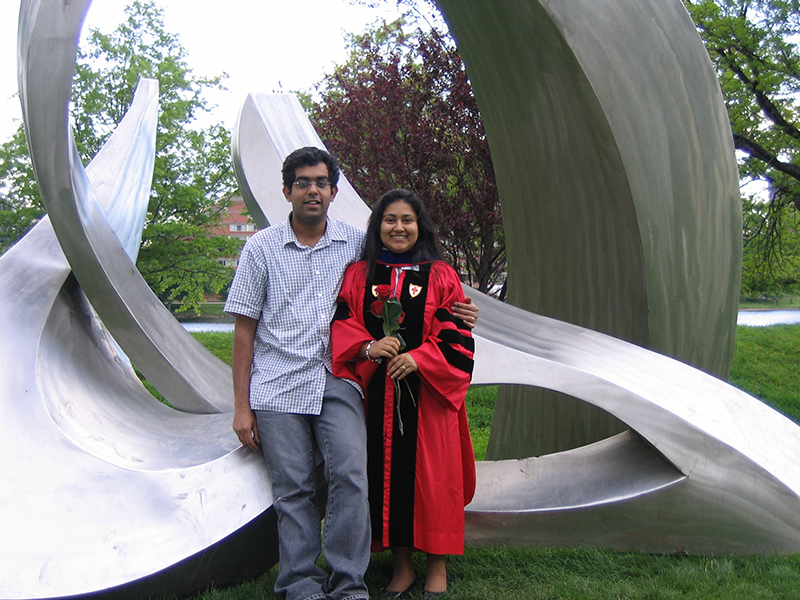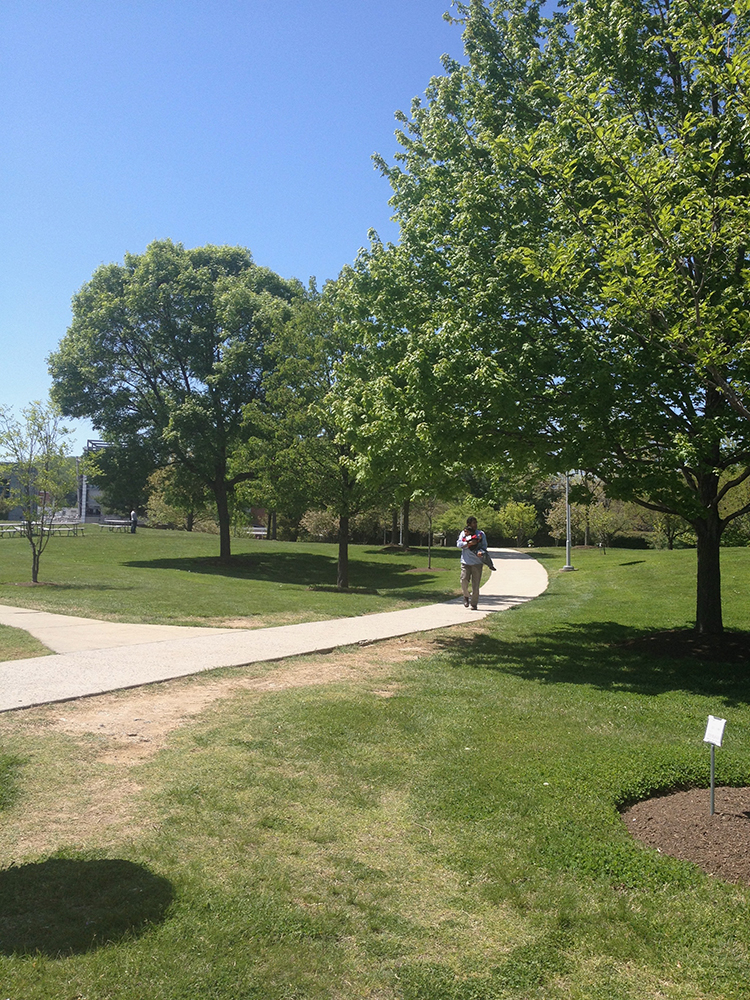Building Community to Advance Science
What first sparked your interest in science?

Credit: Anirban Banerjee, Ph.D.
I grew up in a Bengali family in the eastern part of India. Bengalis pride themselves on being academic-minded, and many of my family members, including my mother, were teachers. My father was an astronomer who wrote books and participated in TV programs to raise awareness about his field. That had a distinct impact on me that I have come to realize more in hindsight, particularly after he passed away. I also owe much of my interest to my early science teachers, who taught things beyond the curriculum and pushed me to find out things on my own.
In India, when you enter high school, you must choose a direction: science or arts. By then, I knew I wanted to go in the direction of science.
At what point did you decide on a career in research?
I knew relatively early that I was not interested in a career in medicine or engineering. I studied chemistry as an undergraduate and then joined a master’s program at the Indian Institute of Technology, Kanpur.
After my first year in the master’s program, I got a summer fellowship in the lab of one of the most well-respected synthetic organic chemists in India. My project was very serious and demanding. I think that the expectation at the outset was that I would make some progress, and at the end of the summer, I would hand it over to my mentor, who was a Ph.D. student. But by the end of my fellowship, I got to the last step of the synthesis. That gave me a kick that I still remember to this day.
The success of research—and what it does to you psychologically—is hard to define. You can’t quantify it. It will expand in your mind as much as you let it, and it stays with you as long as you let it. It also is not a pursuit defined by material returns, and it aligned very well with the strong academic values that were inculcated in me. This is what really got me interested in a research career.
How did your scientific focus evolve from chemistry to structural biology?
In the final semester of my master’s program, there was a team-taught course in which one professor presented concepts in chemical biology. That made me realize that the most intricate and beautiful chemist is nature.

Credit: Anirban Banerjee, Ph.D.
For my Ph.D., I joined Dr. Greg Verdine's lab in the Chemistry and Chemical Biology Department at Harvard University. Chemical biology was an emerging field at that time, and there was a lot of excitement about it. Like me, Greg was a chemist by training, but he used chemistry to understand a whole range of biological problems. I was also fortunate to have a close collaboration with Dr. Martin Karplus, who later won the Nobel Prize for his work on computational chemistry. Dr. Richard Holm, another pioneer at the interface of biology and chemistry, was a close mentor. To this day, the questions that keep me up at night are about how nature does chemistry.
For my postdoctoral fellowship, I chose an advisor in a different field. Dr. Rod MacKinnon got his Nobel Prize solving the first structures of potassium channels, although his research questions were very chemical in nature. That's how I progressively went from synthetic chemistry to structural biochemistry. Where I am right now is quite different from my postdoctoral research, but in the same broad area.
What brought you to NICHD?

Credit: Anirban Banerjee, Ph.D.
I still think of my postdoc advisor as the greatest scientist I have met. When I started my lab, I felt that we would make more impactful contributions if we started working in a new area that was not as well-studied as ion channels. I was fascinated by membrane proteins because of how complex they are and how understudied they were. More than 60% of drug targets, including for the new obesity drugs, are membrane proteins. However, studying mammalian membrane proteins, particularly using structural approaches, is very difficult and time intensive. As a starting principal investigator in a new area, it would be very challenging for me to secure grant funding to work on new membrane protein families. Thus, my research plan really suited the high-risk, high-reward expectation of intramural NIH investigators.
I liked the investigators in the program I was being recruited into at NICHD and how they were applying their expertise to advance our collective understanding of a wide variety of biological questions at a molecular level. During the interview process, I also met other NIH intramural investigators working in different areas of structural biology and membrane biology. The intramural program seemed like a unique, collaborative environment.
But I particularly liked the fact that if I came to NICHD, I would be able to work on my own ideas from day zero. I also enjoyed the prospect of being right next to translational and clinical researchers so that we could partner with them to apply our research to understand human disease and contribute to the discovery of novel therapeutics.
Do you have a favorite research technique?

Credit: Jeremy Swan.
If I had to pick one, it would be reconstitutive biochemistry, which is basically reconstructing cellular processes from bottom up in a test tube.
My lab studies membrane enzymes that catalyze palmitoylation (addition of lipids to proteins) and membrane transporters that move iron across cellular membranes. Reconstituting our membrane proteins in lipid environments, which mimic cellular membranes, helps us study them in a way that maintains their structure and function. What is really interesting is when you start assembling multiple things and evaluating how they work together. Seeing how much complexity you can build back using purified components tells us something about how ultimately modular biology is. I find that fascinating.
What advice do you have for your trainees and other early-career scientists?
Prospective lab members will often ask me about my expectations, and I tell them, “The most important thing that you and I can bring to the table is our collective commitment to science.” What we do is challenging, and if you are not passionate about it, you are unlikely to find it fulfilling.
That said, the way to get the most out of the fantastic scientific environment at NIH is to interact with people and not just stay at your lab bench. If you want scientific advice, ask around. I have people in my lab who are using techniques that we have not used before. For example, one of my postdocs is being co-mentored by another principal investigator who has expertise in mass spectrometry. Another postbaccalaureate fellow is working with a certain kind of cell culture that we have not done before. I try to help connect people in my lab with others across NIH who have expertise and interests they need. I try to interact with as many different scientists as I can. I am involved in coordinating three different scientific interest groups.
It is important to reach out to people for guidance and advice. Not everyone will help, but if you approach 10 people and 5 of them help you, that may be enough to get you where you want to go to.
How do you keep your trainees inspired when projects do not work as expected?
I make sure that each person has their own individual project that they drive, and that people participate in multiple projects. At our lab meetings, everyone presents their last two weeks of experiments. If things are not working, you get a first layer of feedback from your immediate support group. We also meet regularly with two larger scientific interest groups at NICHD and across NIH. These are places where people can get additional advice and suggestions.
I always give my trainees a piece of advice that a senior graduate student once gave me: You should always have both short-term goals and long-term goals. When your short-term goals do not work, make sure that your actions are ultimately working towards your long-term goals. If your long-term goals seem to fall apart, make sure that your short-term goals are working so that you can gear toward different long-term goals.
 BACK TO TOP
BACK TO TOP